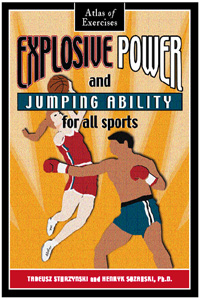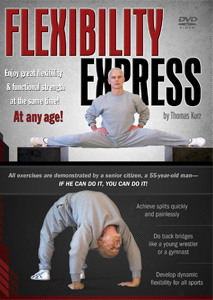by Thomas Kurz
This article is the first in a series dealing with important concepts and principles you should keep in mind when designing and conducting your strength training. This one is about fixing faults and a fighter’s priorities. The next one is about strength goals and the amount of strength training a fighter needs.
First fix faults
Before you begin work against resistance, make sure your posture is correct and your neuromuscular system functions well so you move efficiently, with the least stress on your body. Nagging aches, grimaces, wincing, or squinting when performing exercises—these are all signs of dysfunction or even a chronic injury. Fix them or suffer the consequences.
Faults of posture and of movement control result in poor stabilization of joints and their irritation. An irritated joint, through neural feedback loops, inhibits its stabilizing muscles from, well, stabilizing it. However, you still can make your big muscles (primary movers) move the joint. It takes only a small effort of will to overcome the low-level pain in the joint (hence the grimaces, winces, squints), so you can do it and keep on traumatizing the joint—until you can’t.
For more on fixing faults see tomkurz.wordpress.com/2011/03/23/first-fix-faults.
Fighter’s priorities
Work on those abilities (strength, speed, etc.) and skills (techniques, tactics) that most benefit your performance. If you get hit often, then work more on your footwork (distancing, positioning, evasion) than on your strength. Even though the stronger you are the easier you may take some blows—but only some and not very many. . . .
If you get injured when you hit equipment or people, then first check your technique. Make sure it is correct, and then, if needed, resort to strength exercises specific to that technique. See stadion.com/proper-resistance-for-punching-and-kicking and “Overcoming less than maximal resistance at maximal speed” on page 152 of Science of Sports Training.
To find weak points in your technique and strengthen them, you may use resistance, heavy if needed, whether weights or elastic bands, but you must do the movements slowly.
After you have strengthened the weak points with slow movements, you may increase velocity of your movement. Experiment to find the right resistance so your technique is not slowed too much—with the right resistance it should flow if you want to improve your explosiveness. How much resistance is too much? Whatever slows your technique down. . . . But if you think you are moving at full speed yet you wince or grimace, then the resistance is too great for keeping good technique and is damaging your joints (see above about fixing faults). Either way, moving fast or slow, you must know your techniques well, to the smallest detail, to benefit from doing them against resistance.
The next article covers strength goals and the amount of strength training a fighter needs.
This article is based on the book Science of Sports Training: How to Plan and Control Training for Peak Performance. Get the book now and have all of the info—not just the crumbs! Order now!
If you have any questions on training you can post them at Stadion’s Sports and Martial Arts Training Discussion Forum




Pingback: Designing Your Strength Training: What to Keep in Mind | Tom Kurz's Weblog
Pingback: UR